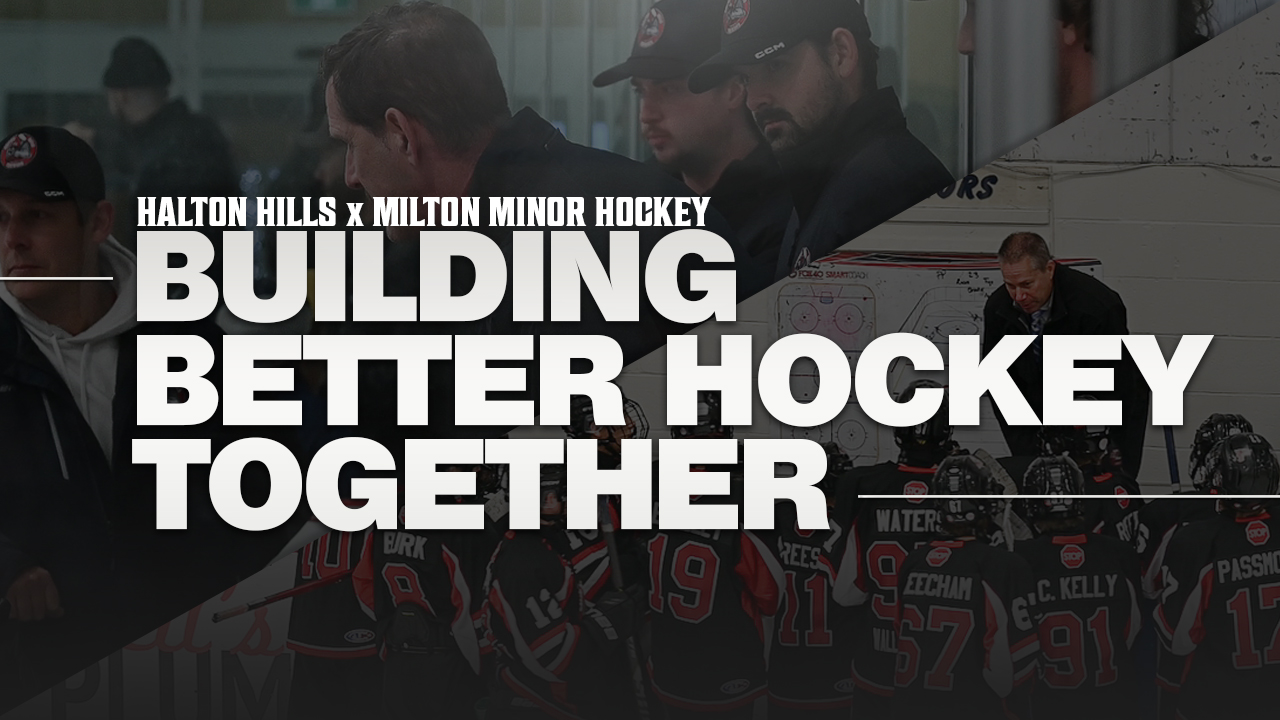How Collaboration Between Halton Hills and Milton Is Reshaping Player Evaluations in Ontario
Date: Nov, 17, 2025 11:00 AM EDT
When Halton Hills Minor Hockey and Milton Minor Hockey decided to work together during this year’s evaluation period, the goal was simple: create a more efficient, more accurate, and more player-focused process. What followed was a model that not only improved the on-ice experience but also strengthened community ties across both associations.
Shared Ice, Shared Vision
For Brenda Geim, Director of Hockey Operations for Halton Hills Minor Hockey, the most significant benefit was immediate: more ice, more games, and more meaningful evaluations.
“The most notable advantage is the ability to share ice time to allow for more exhibition games to be played,” she explained. Instead of coaches scrambling to build their own game schedules, both associations collaborated to organize ice and matchups. “Coaches can focus solely on evaluating players and not worry about the logistics.”
The shared exhibition model also gave evaluators a clearer lens on player performance. Competing against unfamiliar opponents — rather than only internal scrimmages — produced a more honest measure of skill and readiness. It also created opportunity.
“With open borders, this format presents an opportunity for coaches to fill the last one or two spots with players that may not be selected by the coach from the other association.” After six seasons of working with Milton, the approach has become second nature — and the coaches continue to embrace it.
A Better Experience for Players and Families
For players, the benefits were just as evident. Exhibition games offered a more realistic, game-like environment during evaluations, ensuring every athlete was seen under conditions that reflect actual competition.
As open borders become more familiar across Ontario, Geim sees the shared format easing a long-time tryout burden: unnecessary travel.
“Collaborating… allowed players a more game-like evaluation opportunity,” she said. “This format can provide players less running around to tryouts outside of the one association.”
For parents, the streamlined process delivered clarity, flexibility, and choice — all essential ingredients for a positive hockey experience.
Community Feedback
Tryouts always come with a range of opinions, but this season, Geim says open borders contributed to more positive momentum than ever.
“It has provided families and players with greater flexibility and choice, allowing them to find the right fit for their development and enjoyment of the game,” she shared. And the benefits weren’t limited to families. “Our coaches have benefited from a broader player pool as well… It has fostered a stronger collaboration between neighbouring centres. Associations are talking more and helping by sharing resources and ideas.”
Learning Through Change
Collaboration comes with its challenges, especially in a season where open borders were newly adopted province-wide. The biggest learning curve, Geim noted, was ensuring coaches understood the process and followed it consistently.
But the outcome was well worth the work.
“By working together, we can improve the tryout process for both coaches and players, reduce pressure on players who might otherwise be traveling all over, and ease the burden on coaches who are trying to fill a few remaining roster spots.”
Not every team took full advantage of the shared model this year — but those that did saw how widening the competitive player pool can significantly strengthen both centres.
Halton Hills plans to continue, and expand, this partnership.
“We look forward to our continued relationship with Milton Minor Hockey. They are a strong centre, and together we can work for the best interest of our Coaches, Players and Associations,” Geim said. “It is our hope to further grow this collaboration and develop a model that supports consistency, fairness, and opportunity for all participants involved.”
When asked what she would recommend to other associations considering a collaborative approach, Geim kept it simple:
“Remain open to new ideas and take note of what is working well in other centres. Collaboration and the sharing of ideas can lead to stronger, more unified programs. Maintaining transparency, being open and honest with your membership helps to create a foundation of trust. This collaboration has shown that when associations work together rather than in isolation, the greatest benefit goes to the players — and that is the true future of hockey in Ontario.”
Want to Share Your Story?
At the OHF, we know that the strength of our game is built not only on skill, but on the relationships and cooperation that bring communities together. The partnership between Halton Hills Minor Hockey and Milton Minor Hockey is a powerful example of what happens when associations choose collaboration over competition — creating greater opportunity, fairness, and development for every player involved.
Stories like this remind us that progress happens when we break down barriers and strengthen the ties between neighbouring communities. It’s a model that inspires, and a glimpse into the future of collaborative development across the province.
Do you know an association, coach, or community leader making a difference? Reach out to us at zdeforest@ohf.on.ca — we’re always looking to spotlight the next story shaping hockey in Ontario

 Skip to main content
Skip to main content